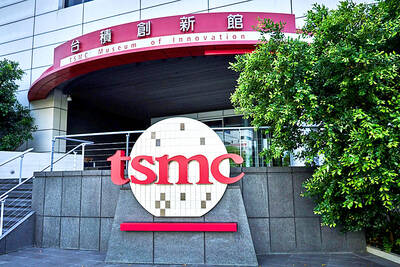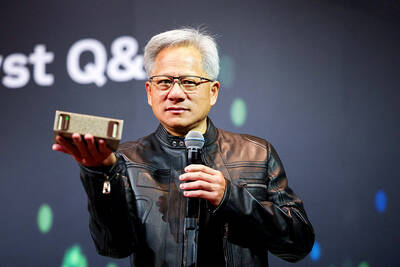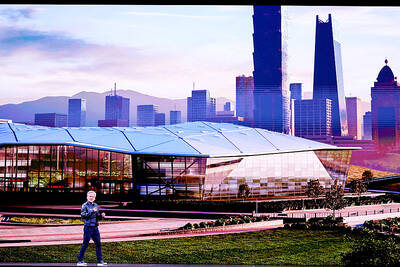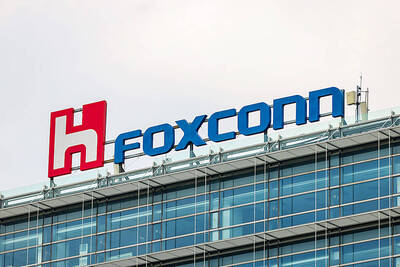Singapore’s biggest wireless network operators have selected Nokia Oyj and Ericsson AB over Huawei Technologies Co (華為) to build the main 5G networks in the city-state.
The selection comes amid tension between Singapore’s biggest trading partners, the US and China, with the US encouraging allies to exclude China’s Huawei from their networks on security grounds.
Singapore has allowed telecoms to choose their network vendors provided they meet various requirements, including security.
A joint venture between M1 Ltd and StarHub Ltd, which received one of the city-state’s 5G licenses, said it had selected Nokia to build its radio access network and that the Finnish company was its preferred supplier for the core and millimeter-wave (mmWave) networks.
The venture said it was also exploring other network parts with Huawei and China’s ZTE Corp (中興).
In a separate statement, 5G licensee Singapore Telecommunications Ltd said it had selected Sweden’s Ericsson to negotiate the provision of ran, core and mmWave networks.
Singapore “did not exclude any vendor” and had spelled out its expectations for 5G networks, with an emphasis on security, resilience and performance, Singaporean Minister for Communications and Information S. Iswaran said on Wednesday.
The telecoms regulator said it gave telecoms the final 5G licenses after they completed required processes, including the selection of preferred frequency spectrum lots and vendor partners.
Australia’s TPG Telecom Ltd, which is able to build a localized 5G network in Singapore, would use Huawei, Iswaran said.
Huawei did not immediately respond to a request for comment.
Unlike the upgrades of cellular standards such as 2G in the early 1990s, 3G in the early 2000s and 4G in 2010, the 5G standard would deliver not just faster telephone and computer data services but also help connect vehicles, machines, cargo and farming equipment.
The city-state has said it is on track for nationwide 5G standalone deployment by 2025.

SEEKING CLARITY: Washington should not adopt measures that create uncertainties for ‘existing semiconductor investments,’ TSMC said referring to its US$165 billion in the US Taiwan Semiconductor Manufacturing Co (TSMC, 台積電) told the US that any future tariffs on Taiwanese semiconductors could reduce demand for chips and derail its pledge to increase its investment in Arizona. “New import restrictions could jeopardize current US leadership in the competitive technology industry and create uncertainties for many committed semiconductor capital projects in the US, including TSMC Arizona’s significant investment plan in Phoenix,” the chipmaker wrote in a letter to the US Department of Commerce. TSMC issued the warning in response to a solicitation for comments by the department on a possible tariff on semiconductor imports by US President Donald Trump’s

‘FAILED EXPORT CONTROLS’: Jensen Huang said that Washington should maximize the speed of AI diffusion, because not doing so would give competitors an advantage Nvidia Corp cofounder and chief executive officer Jensen Huang (黃仁勳) yesterday criticized the US government’s restrictions on exports of artificial intelligence (AI) chips to China, saying that the policy was a failure and would only spur China to accelerate AI development. The export controls gave China the spirit, motivation and government support to accelerate AI development, Huang told reporters at the Computex trade show in Taipei. The competition in China is already intense, given its strong software capabilities, extensive technology ecosystems and work efficiency, he said. “All in all, the export controls were a failure. The facts would suggest it,” he said. “The US

The government has launched a three-pronged strategy to attract local and international talent, aiming to position Taiwan as a new global hub following Nvidia Corp’s announcement that it has chosen Taipei as the site of its Taiwan headquarters. Nvidia cofounder and CEO Jensen Huang (黃仁勳) on Monday last week announced during his keynote speech at the Computex trade show in Taipei that the Nvidia Constellation, the company’s planned Taiwan headquarters, would be located in the Beitou-Shilin Technology Park (北投士林科技園區) in Taipei. Huang’s decision to establish a base in Taiwan is “primarily due to Taiwan’s talent pool and its strength in the semiconductor

French President Emmanuel Macron has expressed gratitude to Hon Hai Precision Industry Co (鴻海精密) for its plan to invest approximately 250 million euros (US$278 million) in a joint venture in France focused on the semiconductor and space industries. On his official X account on Tuesday, Macron thanked Hon Hai, also known globally as Foxconn Technology Group (富士康科技集團), for its investment projects announced at Choose France, a flagship economic summit held on Monday to attract foreign investment. In the post, Macron included a GIF displaying the national flag of the Republic of China (Taiwan), as he did for other foreign investors, including China-based